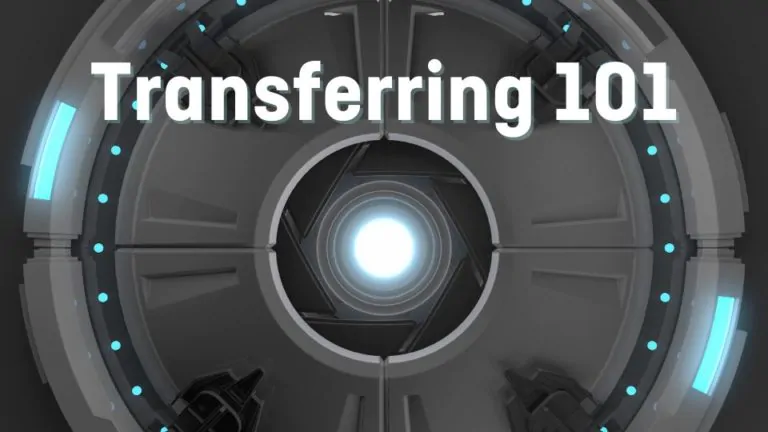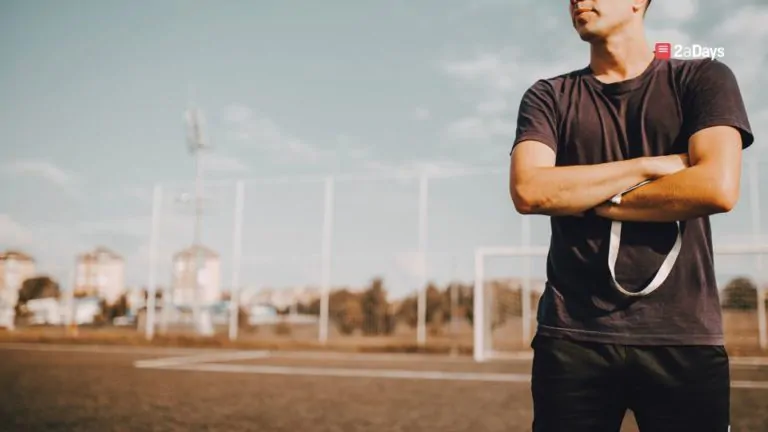Cliff Robbins is a CTE researcher who has experience working with the Concussion Legacy Foundation and as a Study Coordinator at the CTE Center at Boston University. Additionally, Robbins has authored multiple academic papers on concussion and CTE, and is a rare breed of sports fan, managing to support both the New York Giants and Boston Red Sox. Robbins is also a frequent public speaker and has worked closely with educational, athletic and municipal groups to help implement best practices to protect athletes from concussions and raise awareness surrounding issues that can arise when concussions are sustained.
2aDays sat down with Cliff to discuss the science behind concussions, and this is some of the advice he shared with us:
1. What is a concussion?
A concussion is a brain injury caused by an impact to the head or body that results in a change in brain function. Symptoms of a concussion vary from injury to injury and can include things like a headache, nausea or vomiting, sensitivity to light or noise, changes in mood, and even a loss of consciousness. If treated correctly, the vast majority of concussions will resolve within two to three weeks, however, if the injury is not properly managed the symptoms can draw out for weeks, months, or even years.
2. How do concussions occur?
A concussion can occur whenever you are hit hard in the head, or something causes the head to shake violently. The problem has to do with the physics of brain tissue: The brain is made of soft, fatty tissue with a consistency like Jell-O. A sudden jolt can make the brain shift and twist inside the skull, jiggling in place and even bumping against the skull's hard interior. And unlike Jell-O, the brain's tissue isn't uniform: it's made up of a vast network of 90 billion neurons, all relaying signals to one another via long, wire-like structures called axons. These spindly structures are like wires inside the brain, but they are very fragile. When brain tissue jiggles, axons will stretch, and can even tear apart. A damaged axon has a much harder time relaying signals, so until the damage is repaired, people with concussions will notice that their brains aren't working at full capacity.
Related: Rate your Coaches, Facilities, and Campus Visits
3. If I suffer a concussion, what should I do?
If you suffer a concussion, the first thing you should do is get out of the game. Trying to play through a concussion only makes things worse: you're at increased injury risk (both brain and body injuries), and when you finally do come out your recovery will take longer. Even just playing out the half results in an average recovery time twice as long as coming out immediately after the impact.
After you've come out of the game, your next step should be the doctor. Avoid things that will raise your heart rate or strain your brain until you have consulted with your doctor: too much stimulation can cause more damage, extending your recovery.
If there was a hit, and something seems “off” about a player, you should check to make sure it's not a concussion.
-Cliff Robbins
4. How many sports-related concussions are there in a year?
The short answer is we don't know how many concussions occur in a year, but it is on the order of millions.
That question is tricky because most concussions are never reported, never diagnosed, and never counted. That makes it hard to estimate how many occur in a given period of time, but most scientists agree that estimates on paper are likely smaller than the actual number of concussions that occur. That said, the most commonly cited estimates range from about 1.6 to 3.8 million sports-related concussions taking place in the US every year.
Related: Handling Concussions Head On: Testing and the Role of Parents and Coaches in Concussion Treatment
5. Can you speak on the return to play after you are diagnosed with a concussion?
Returning to play after a concussion is a balancing act – you want to get back in action as quickly as possible, but if you rush it, it makes the concussion last a lot longer.
To help prevent rushing, doctors recommend following a stepwise return to activity. The idea is to rest until symptoms go away, and then gradually increase activity by steps as tolerated. If you can perform the activity at a particular level without making your symptoms worse for 24 hours, then you take a step up to the next activity level. If symptoms return, you take one or two steps back until symptoms stabilize again. Over the course of six steps, athletes can return to activity with confidence that they aren't rushing it. You can see a sample protocol here, or ask your doctor or athletic trainer what they recommend.
It's important to note here that these protocols work, but only if you are honest about reporting your symptoms. If you hide your symptoms, the increased activity with each level will cause more damage, symptoms will get worse, and your recovery will take much longer. What may have set you back a couple of days if you spoke up about it can very easily set you back weeks or months if you don't speak up.
6. How would a coach recognize a concussion? What are the symptoms?
Some common symptoms of a concussion include a headache, trouble balancing, feeling dazed or disoriented, sensitivity to light or noise, nausea, vomiting, memory problems, or a loss of consciousness. Every concussion has a unique constellation of symptoms, and there are many more possible symptoms that aren't listed here. Remember: the brain controls everything about our personality and behavior, so there are a lot of things that can go wrong after an injury. If there was a hit, and something seems “off” about a player, you should check to make sure it's not a concussion.
Related: Awareness Can Create Change: 6 Must-Know Facts About Concussions in Ice Hockey
Coaches should be actively looking out for these kinds of changes in their athletes, but unfortunately, coaches are, very busy people and very busy people make miss things and make mistakes. That's why we need to make sure that everyone is looking out for concussions, not just the coach. Coaches, athletic trainers, sideline personnel, officials, and spectators should all be looking out for signs that the players on the field may be hurt.
The most important concussion spotters are your teammates on the field with you. If something seems off about a teammate, it's on you to speak up. Whether you decide to talk to your teammate, the ref, a trainer, or a member of the coaching staff, it's important you tell someone. You may have been the only person to see it, and you would want your teammates to look out for you if you needed help. Our Team Up Speak Up program emphasizes just this – the importance of teammates in recognizing concussions. Check it out and sign-up your team here.
7. What is the procedure when you are knocked out?
If you are knocked out, even briefly, you need to go to the hospital right away. Losing consciousness happens in fewer than 10% of concussions, and is a very severe symptom that demands immediate action. There are two important reasons why:
First, losing consciousness means that you have suffered a concussion. A trip to the doctor will start you on your road to recovery. Second, losing consciousness is a risk factor for other, more severe brain injuries (such as a brain bleed). You want to make sure you are evaluated by a doctor as soon as possible to make sure you don't have a more severe injury on top of your concussion that could result in permanent disability or death.
8. How can you prevent a concussion?
The only way to prevent a concussion is not to get hit in the head or engage in activities that could cause your head to move violently. For athletes, that's not always easy, but there are some other things you can do to reduce the chances of a concussion occurring. Maintaining awareness on the field is an important start – if you are blindsided and unable to brace for impact you are more likely to suffer a concussion. Increasing neck strength may also help absorb some of the forces from a hit, possibly reducing your chances of suffering a concussion.
Even more important than understanding what can prevent a concussion is understanding what can't prevent a concussion. The reality is that no commercially available product has been shown to reduce concussion risk.
Helmets are important pieces of safety equipment that are ideal for preventing injuries to the bone of your skull, but they cannot always protect the soft brain inside. The packaging on accessories like helmet pads, neck collars, and mouth guards may say they reduce the risk of concussion, but to date, none of these products have been scientifically shown to reduce concussion risk. Likewise, no supplements or medications have been shown to reduce concussion risk.
Concussions are scary, and unfortunately, some companies have tried to use that fear to make money by selling products that don't work. If a product sounds too good to be true, it probably is.
Related: Concussion Callback: Why Taking Medical Leave Can Help College Athletes Succeed
9. When a recruit is looking at a college, how important is it that they ask questions about concussions tests and concussion prevention? Should they ask the coach or training staff?
Recruits should make sure that prospective schools not only have a concussion protocol but also that the coaches and training staff are aware of it and take it seriously. The most critical time for concussion recovery is immediately after the injury, and if you suffer a concussion on the field, athletic staff are most likely going to be the people handling your care. You want to make sure that the coaches and trainers put your well-being above their win.
Ask questions about their concussion policy. Make them specific: what happens to your roster spot if you are injured? What kind of academic support do they offer student-athletes who are struggling with returning to the classroom? How many concussions were diagnosed last year? If they can't answer them, or if they are dismissive when you ask, it's unlikely you will get the support you need when the game is on the line. Be especially careful with teams that claim they never have concussions: that may mean they have a culture of hiding injuries, rather than managing them.
Have an idea for a story or a question you need answered? Want to set up an interview with us? Email us at [email protected]
* Originally published on February 14, 2023, by 2aDays Staff







